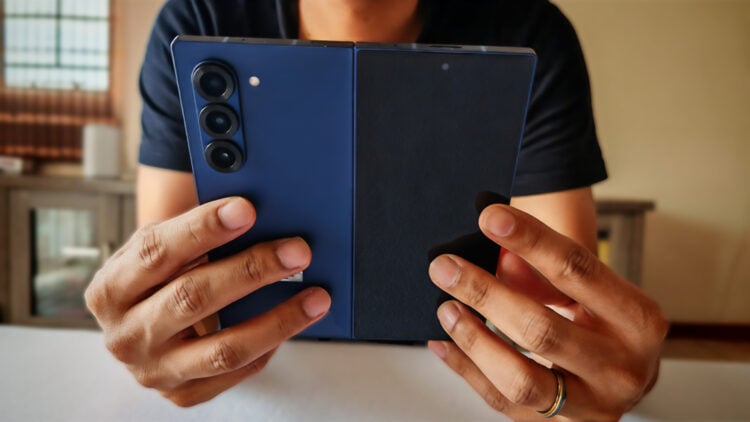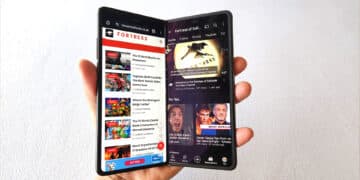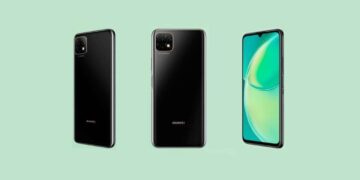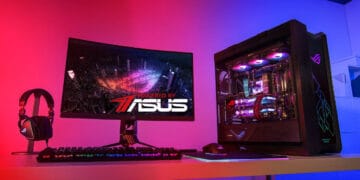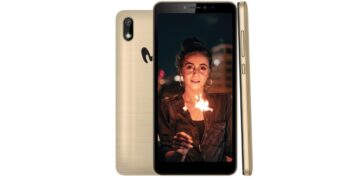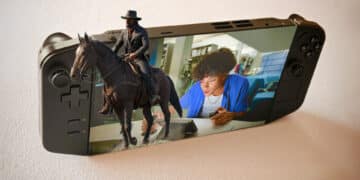The dust has finally settled on the “who did it first” challenge on foldable technology, with most OEMs pushing nice-to-haves as a sort of trial-and-error approach to what’s achievable and practical on foldable smartphones. With the technology having improved, issues primarily ironed out, and gimmicks no longer being the aim of the game, we’re starting to see many solid options in the market. Samsung has been one of the leaders and critical investors in pushing the technology to new heights, and its latest release, the Galaxy Z Fold6, is the pinnacle of the segment.
There’s been a lot of movement in the smartphone industry over the past year. While the hardware continues to improve, the rate at which throwing more power to solve a problem has somewhat dwindled – for the better. OEMs are focusing more on building a better ecosystem around their offerings, spurred on by improved handling of AI capabilities. We’ve already explored some of these on more conventional smartphone configurations, so how does it stack up for foldable smartphones?
Samsung Galaxy Z Fold6 Build and Design
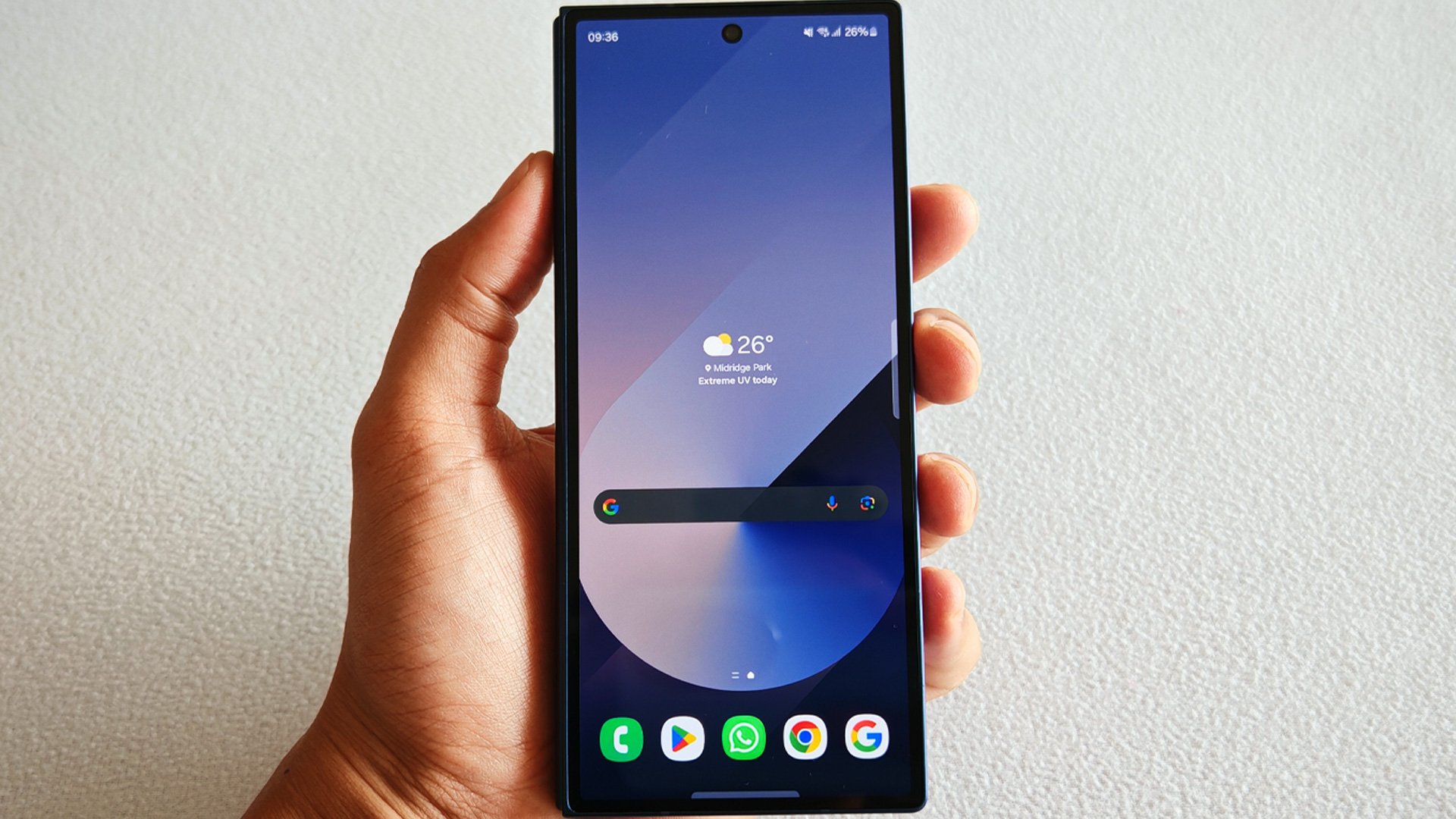
Upon first use of the new Z Fold6, a certain Daft Punk song popped into my head with all the upgrades – Harder, Better, Faster, Stronger. That seems to be the overall consensus with all the upgrades regarding the design.
Samsung has slightly changed the phone’s shape, switching from a rounder design in 2023 to a more squared finish in 2024. It may seem insignificant from a design perspective, but it has inherent benefits directly linked to the change, which I’ll discuss later.
Other improvements include taller and broader dimensions in unfolded mode while still being lighter and thinner overall. It may not have been an issue per se, but having a narrower unfolded mode than a conventional smartphone didn’t lend well to it being the best of both worlds. It compromised a bit on single-hand use and seemed much more cramped with an odd aspect ratio. It may still be unconventional, but it’s a lot more similar to other flagship single-screen phones, which is a significant factor.
With a thinner and lighter body, it is much easier to use, even when unfolded. Previously, you couldn’t use the device unfolded in one hand after a few minutes. It was just too heavy and often too thick to be able to grip and use single-handedly. It’s a lot easier with the Z Fold6, primarily allowing for better usage as a smartphone and then even better as a small tablet. This also comes in handy later when attempting to utilise all the new features Samsung has included in its UI.
Another of Samsung’s critical updates on the latest Fold series is its push to tackle the dust issue evident in all previous models. With the constant folding of the screen, gaps along the fold and hinge allow dust and particles to enter and get stuck, leading to the layers separating or just causing general wear and tear that you wouldn’t find on conventional smartphones.
With the Fold6, Samsung offers an IP48 rating on the device. This means it has been tested and certified to protect against dust and particles over 1mm while offering water resistance with immersion up to 1m for an hour. It’s not quite the highest certified protection against dust, but it’s far better than any previously offered, which is excellent news for fans.
Overall, the design has improved, with a thinner, lighter and more robust build quality. Adding to this, a few other subtle changes and the overall appearance and usage have benefitted greatly.
Screen and Display
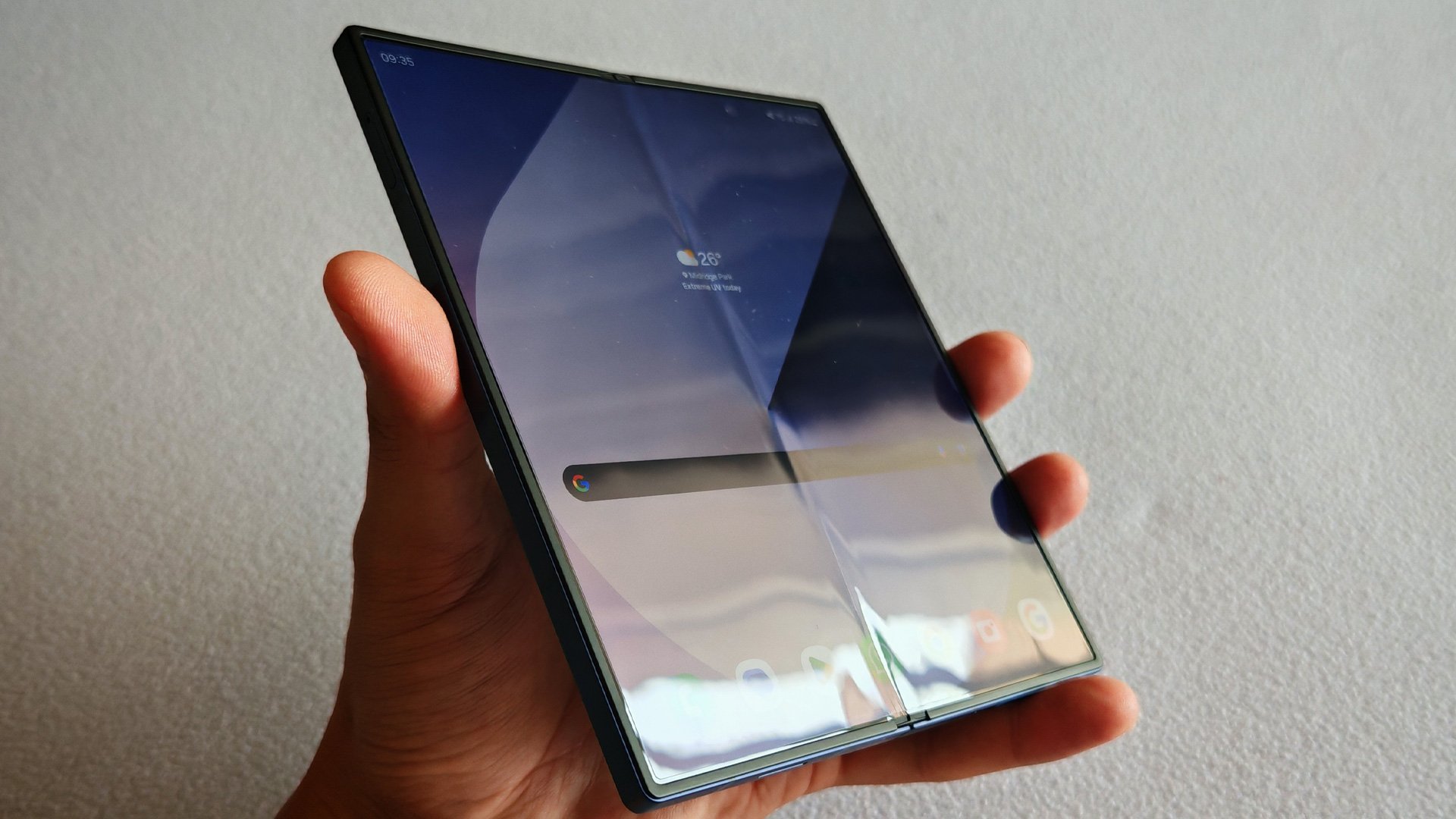
The foldable screen size remains relatively the same, with the outer screen increasing thanks to the broader and taller frame.
The foldable 7.6” screen has a 1,856×2,160px resolution compared to last year’s model at 1,812×2,176px. This means that the Fold6 has more pixels than the Fold5. Part of this has resulted from the more squared design change, allowing for more visible pixels on the four corners with a slightly increased pixel density at 374ppi.
Additionally, the screen features a Dynamic LTPO AMOLED 2X panel, which supports a 120Hz refresh rate, HDR10+ and a brightness up to 2600 nits. The switch to using the LTPO technology utilises less power to operate, meaning that not only do you save on battery consumption, but it also allows for an increase in maximum brightness levels.
The cover display has a 0.1” increase to 6.3” with 968×2,376px resolution for a big pixel density jump. This change in the resolution and aspect ratio means that the screen feels less cramped, with icons better spaced and app screen real estate much better optimised. Despite the increased size, you can still use it in one hand, which is great for everyday use. The panel has also switched to using the LTPO technology, as discussed on the foldable panel.
With the increased real estate on both the primary and secondary screens and the better brightness support, the overall performance and visuals have been improved. The AMOLED screens still deliver bold colours and crisp imagery but also fare much better in direct sunlight
Specifications
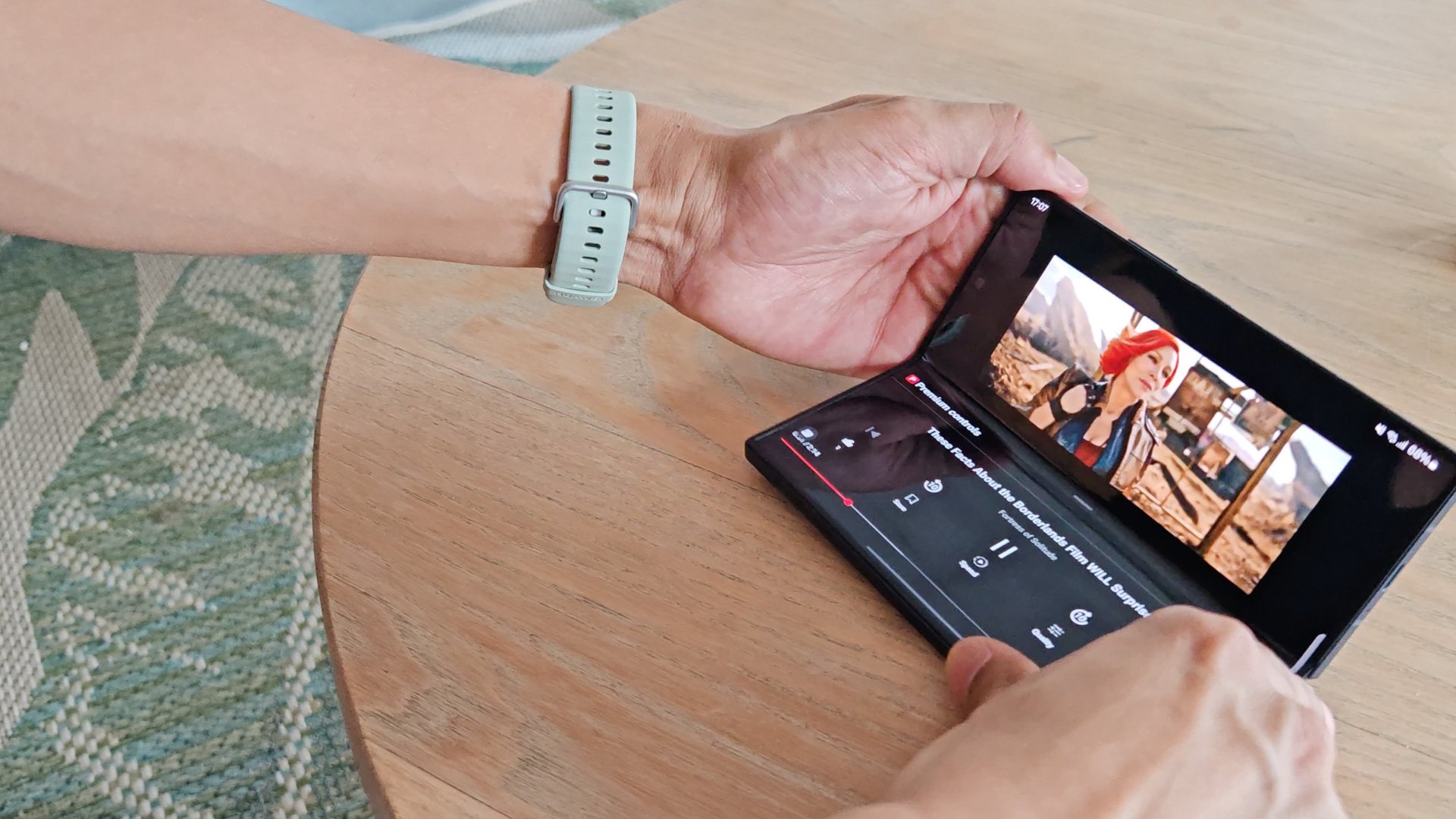
In a few initial releases, Samsung didn’t always pack the latest hardware into its Fold or Flip series devices. Thankfully, that’s no longer an issue with the Fold5, and now Fold6 is offering hardware almost on par with its flagship, the latest being the S24 Ultra. Samsung has included the same Qualcomm chipset under the hood, the SM8650-AC Snapdragon 8 Gen 3 (4 nm) Octa-core CPU.
Its eight cores include a single 3.39GHz Cortex-X4 CPU, followed by three 3.1GHz Cortex-A720 CPUs, two 2.9GHz Cortex-A720 CPUs and two 2.2GHz Cortex-A520 CPUs. The same chipset includes the Adreno 750 1GHz GPU for all your mobile gaming requirements.
This is paired with 256GB, 512GB and 1TB internal storage options, all of which feature 12GB RAM. These are also the same variants available for the S24 Ultra.
The rear houses a triple-lens camera with the following specifications:
- 50MP, f/1.8, 23mm (wide), 1.0µm, dual pixel PDAF, OIS
- 10MP, f/2.4, 66mm (telephoto), 1.0µm, PDAF, OIS, 3x optical zoom
- 12MP, f/2.2, 123˚, 12mm (ultrawide), 1.12µm
Samsung puts plenty of resources behind its software ecosystem, especially in terms of AI and supporting tech. The device comes pre-installed with Android 14, with Samsung confirming up to four major Android upgrades (equivalent to four years). The device features Samsung’s One UI 6.1.1 atop the Android OS. Samsung has also committed to Android’s push for monthly security upgrades to protect its users.
The Fold series has never had the top battery available in the Samsung stables. It keeps the same battery capacity as the previous model with the Li-Po 4400mAh, a non-removable battery. The improved optimisation across the board should deliver much better overall results.
Performance and Battery Life
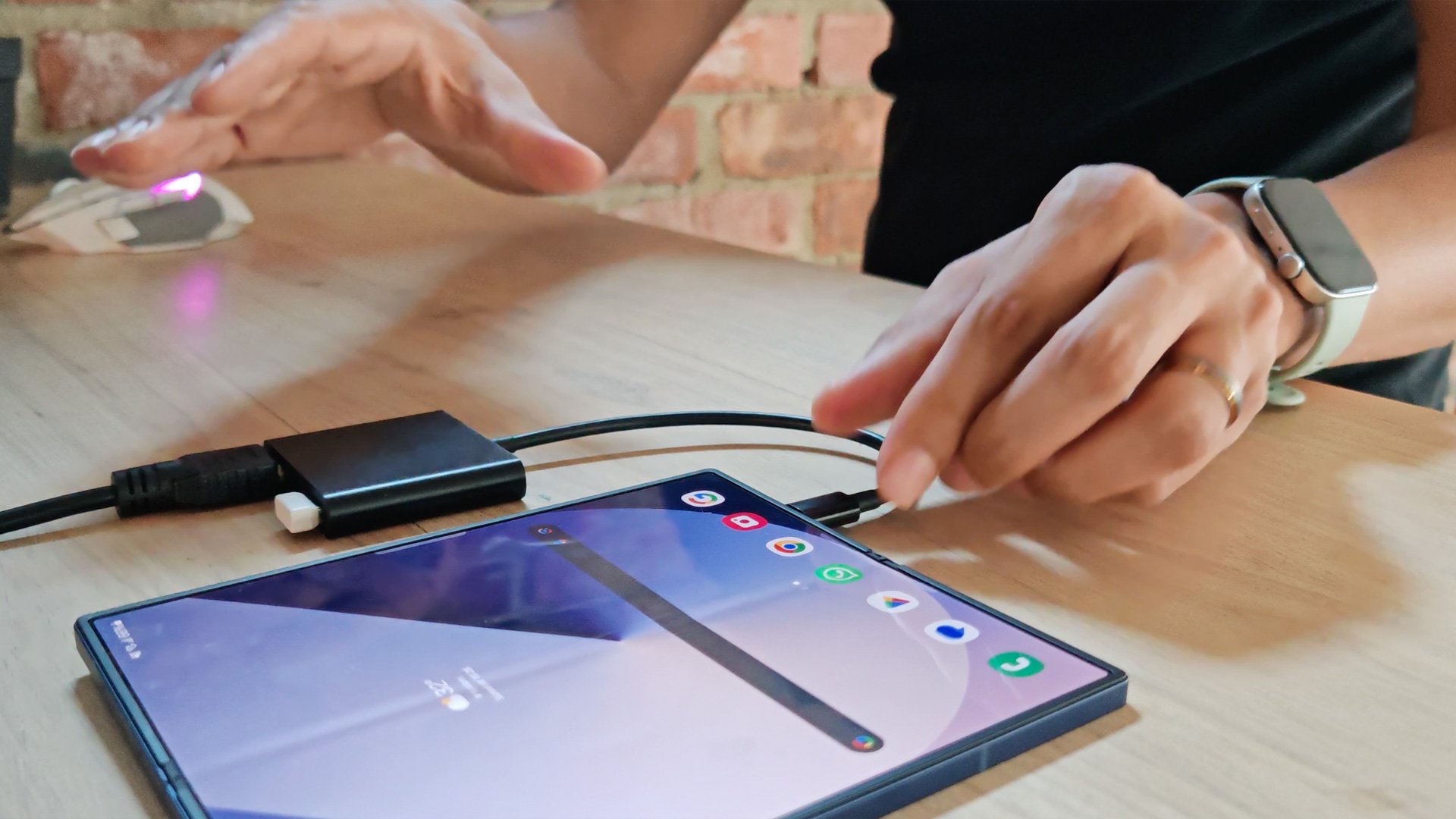
The Samsung Galaxy Z Fold6 holds up against all the tests I could throw. All the baseline tests passed without issue. But, on modern smartphones, that should be the norm, even regarding mid-range options. With a foldable smartphone, there’s much more focus on multitasking and dual usage in its various forms.
For starters, there are many automated functions like switching from the outer screen to tablet mode when opened, firstly to complete the switch, then to adjust to a different layout. Then, various options exist for using two apps simultaneously and interoperating between them. Also, you can use the Flex Mode Panel to use the duality of an app with added functions when supported. Many features work on the Fold6 and can even be customised further.
Having tested many other side features that don’t often make the cut in the marketing campaign but still offer great value to users. The first of these is Samsung DeX. I’ve always enjoyed this feature, and it has become more accessible in recent iterations, allowing for standard HDMI connectivity without any specialised tools. This assists users who need to carry their office with them, and certain apps don’t work best on a small screen, such as editing spreadsheets and similar. DeX makes this much more accessible and allows pairing Bluetooth peripherals to aid your experience.
Speaking of Bluetooth connectivity of peripherals, the second feature I enjoy is the easy connection of Bluetooth game controllers. Pairing my Xbox controller with ease opens up many ways to play your mobile games. Furthermore, using DeX and your controllers almost turns your device into a mini-console, which is a great incentive for many.
All these features, including a larger screen, will consume more battery power. With its 4,400mAh battery capacity, it’s not the biggest around. But it gets the job done well. I wasn’t always sold on the battery life of the Fold series, but this has drastically improved with the Fold6. With a more efficient chipset and better-optimised display panel, these deliver much better results when in use. For an average day, I did not worry about the battery being depleted and even lasting a few hours into a second day’s use. For content creators and other power users, you can still rely on the device to make it through a heavy day’s use, which is excellent news. I often spent more time using the device unfolded with the larger screen, and even then, I never had to reach for my charger in any kind of frenzy.
The Power of Samsung’s Galaxy AI
Without getting into an honest debate on whether the AI trend we’ve seen popped up over the past two or three is real AI, there are much more improved tools available to users today, right at their fingertips. The inclusion of Galaxy AI on many of the leading Galaxy smartphones makes these tools available to average users who don’t get to experience these on their PCs or laptops due to being locked or not having the supported hardware. That, more than anything else, is the best advantage of bringing this to the smartphone ecosystem.
With Galaxy AI, there are several tools available under its banner. This includes everything from auto-translating calls, editing photos, easier searching, and even the creation of art based on your initial drawings. The latter has been a contentious issue when using existing art to create new art via prompts. Still, Samsung largely avoids these issues by using tools to enhance a user’s drawings and turning them into images rather than creations solely based on previous renderings.
I’ve used these tools on my Samsung over the past year since it was introduced. Still, the more significant real estate available on Fold6 allows for improved results, especially when using tools for editing and drawing.
Still, these may not be your everyday tools of trade, but having these features available and directly integrated into the One UI firmware makes it much easier to use and optimise when performing its tasks. Within a few seconds, I was able to learn how to use the tools, and then, after a few seconds of rendering it, I could generate what I had asked it to. I was initially sceptical about how the tools were presented but was impressed with how the technology has progressed and how more use cases have been added.
Is the Samsung Galaxy Z Fold6 Worth It?
There’s still a significant divide between necessity and nice-to-have regarding the foldable smartphone. While most users won’t ever need to own a foldable smartphone, the desire to have one has always been strong. However, the bridge to cross has been shortened substantially with the Samsung Galaxy Z Fold6 launch. It offers more usable features for everyday use while pushing content creation and editing to levels that are close to becoming essential. And that’s the mark of a winning product.
A drawback of the device has been its premium. Having initially started at a price of over R50,000, pricing has decreased as the technology costs dropped. The Galaxy Z Fold6 launched at R43,499, but with a few sales, you can pick the device up for just under R30,000 – that’s quite a steal. With Black Friday also coming up, more sales are bound to be around. It’s a worthwhile purchase.
The Review
Samsung Galaxy Z Fold6
Building upon a solid base, Samsung improves its Galaxy Z Fold6 with a series of upgrades, including a larger outer screen, thinner and lighter frame, more efficient battery use, and excellent software support with its integrated Galaxy AI. It’s a breeze to use and a worthwhile purchase.
PROS
- Large foldable OLED screen
- Better outer screen
- Efficient battery life
- Improved IP48 rating
- Better use of Galaxy AI
CONS
- High starting price


